Editor’s Note: For art lovers, such as myself, here’s a chance to go behind the scenes to get a feel for a professional artist’s life as he answers my questions. Be sure to read Steve’s bio by clicking on “Authors” on the black menu bar.
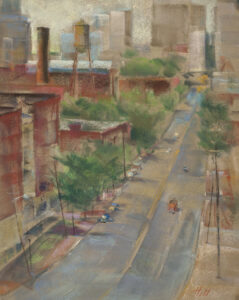 What kind of an artist are you? “I have had a life-long love affair with the landscape and how light affects everything we see. If I can capture that feeling in my paintings, ‘I’m happy as a clam at high tide’, as we like to say in the San Juan Islands of Washington State where I live and work. My passion is to express my feelings and moods in a color-charged way that makes the viewer feel it as well. I have found the immediacy of plein air painting allows that to happen like no other. I strive to create with every element of my psyche dialed into the joyous, expressive, and interpretative language while working on site.”
What kind of an artist are you? “I have had a life-long love affair with the landscape and how light affects everything we see. If I can capture that feeling in my paintings, ‘I’m happy as a clam at high tide’, as we like to say in the San Juan Islands of Washington State where I live and work. My passion is to express my feelings and moods in a color-charged way that makes the viewer feel it as well. I have found the immediacy of plein air painting allows that to happen like no other. I strive to create with every element of my psyche dialed into the joyous, expressive, and interpretative language while working on site.”
What is a professional artist? “Very simply, I make my living from selling my artwork. I invite art buyers and art lovers to visit my website: windsweptstudios.com. Half of the sales are online sales and the other half are from buyers coming into my gallery. I have collectors who now own as many as 40 originals each, which has been a revelation. They like that I’ve won so many major awards in the past two decades, as those add value to the pieces they already own. Besides the obvious financial success of selling work, for me, becoming professional had to do with the total time commitment that started my journey. While creating a long track record of awards and honors certainly looks good on my artist’s bio, it all started with a realization that ‘hobby and amateur’ no longer had a place in my vocabulary. Comparing my work to established artists and realizing it was as good as or better than some artworld heroes has made all the difference and builds confidence. I enter juried shows as a benchmark to see how other professionals view my work and if it can stand up to the best.”
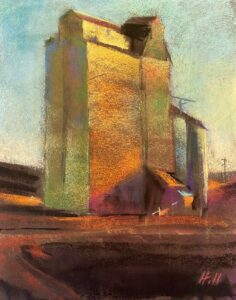 When did you know you were an artist? “I have been an artist since the day I picked up my first pencils and crayons, making marks on most surfaces . . . making art was the beacon that allowed me to survive high school, college, and the U.S. Army where I became an illustrator. In the fourth grade, I won a city-wide art contest with the Boise Red Cross and a ticket to The Penny Theatre for my drawing. I was hooked!”
When did you know you were an artist? “I have been an artist since the day I picked up my first pencils and crayons, making marks on most surfaces . . . making art was the beacon that allowed me to survive high school, college, and the U.S. Army where I became an illustrator. In the fourth grade, I won a city-wide art contest with the Boise Red Cross and a ticket to The Penny Theatre for my drawing. I was hooked!”
How did you develop your skills? “I earned my MFA (master’s degree in fine art) in painting from Washington State University (WSU), studying with notable and famous artists like Robert Helm, Gaylen Hansen, and Robert Sterling.” During undergrad art studies at Boise State University (BSU) I was very lucky to have great instruction at BSU with Charles F. Smith, Larry Cromwell, and Howard Huff in painting. They all motivated me beyond the classroom, giving me a much needed, disciplined work ethic. I also became life-long friends with the best art students of that era and had the support of art faculty members. Non-artists think ‘Well, you were born with talent’ but that’s only 10% of it. The other 90% comes from a work ethic and a desire to express myself visually. It doesn’t end. Every serious artist I know will tell you that they are still learning, and most are never quite happy with their latest works. On his final day, Renoir put his brushes down and said something like “I believe I have learned something new today”. He was painting from a wheelchair, had crippling, debilitating arthritis and actually strapped his brushes to gnarly, deformed hands! Maybe that’s the kind of discipline it takes to get a foothold in the artworld.”
How did you get a foothold in the art world? “Moving from graduate school at WSU to a remote island in the San Juans in 1974 really gave me a wake-up call! No one knew anything about me or my artwork and that needed to change. I sought out galleries in Seattle and started exhibiting there as well as major art competitions around the country. I got into a few but realized that to be taken seriously, I had to further develop my painting skills and style – and take myself more seriously. All of that requires a huge time commitment (brush miles as we say) and just plain hard work, daily, with no exceptions. I had to get really good at my craft and not rely on happy accidents defining my work.”
What is one of your lucky breaks? “While I was working as a school janitor on Lopez Island (1975) to supplement my income as the proverbial struggling artist, the school superintendent noticed that I was a certified secondary art teacher (Idaho) and had taught at WSU. He asked me if I could create an art program at the local school. The art program was a great success and became a springboard to more business success – and even better — through it I met my wife, Judy, creating a happy, loving marriage with three sons.”
How do you help non-artists learn about art? “One way is with my newsletter: I have a segment entitled ‘Artists’ Terms Defined and Demystified’ in which I explain terms like ‘en plein air’ which means painting in the open air, on site, outdoors.”
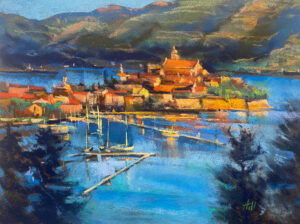 How do you help other artists? “I take artists on exotic painting trips, such as to Croatia, Belgium, Cuba, or around the San Juan Islands where I live. I’ve taught over 100 workshops around the U.S. during the past 20 years. This fall I’m leading my 8th painting trip to Croatia. I learn just as much from observing a student’s work when I’m teaching which provides endless inspiration and conversation for both of us.”
How do you help other artists? “I take artists on exotic painting trips, such as to Croatia, Belgium, Cuba, or around the San Juan Islands where I live. I’ve taught over 100 workshops around the U.S. during the past 20 years. This fall I’m leading my 8th painting trip to Croatia. I learn just as much from observing a student’s work when I’m teaching which provides endless inspiration and conversation for both of us.”
How often do you paint? “I paint nearly every single day, always with newly-inspired enthusiasm and energy. I am the luckiest guy alive . . . I am truly blessed to be living the artist’s dream in the fabled San Juan Islands, a dream that has become a reality . . . as I am “here at last”.
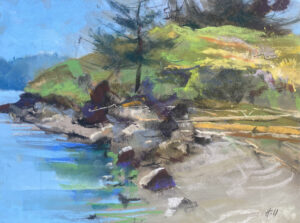 Besides your talent and hard work, what accounts for your enormous success as a professional artist? “Having a supportive wife, who’s very knowledgeable about art and who provides constant encouragement — even when a painting is going poorly — has been paramount to my emotional and financial success in the fickle art world!”
Besides your talent and hard work, what accounts for your enormous success as a professional artist? “Having a supportive wife, who’s very knowledgeable about art and who provides constant encouragement — even when a painting is going poorly — has been paramount to my emotional and financial success in the fickle art world!”
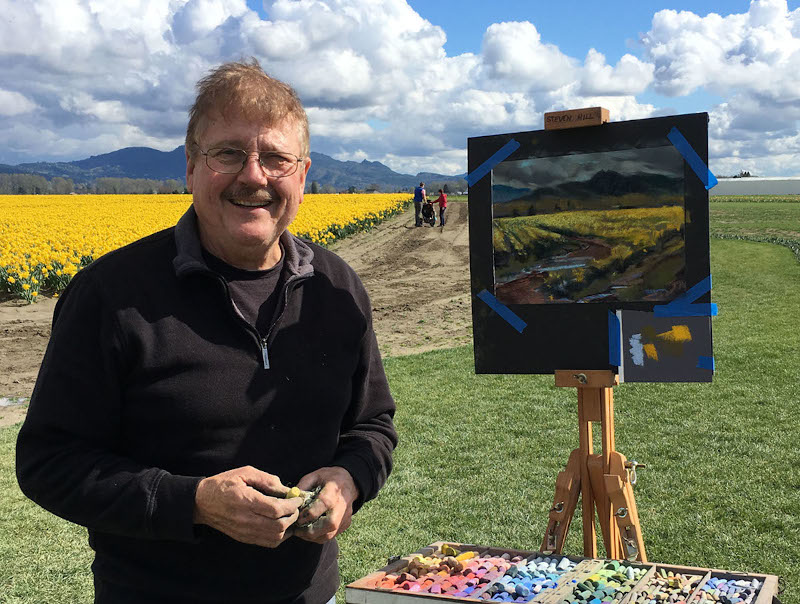
Copyright © 2024 by Steve Hill. All paintings are Steve Hill originals.
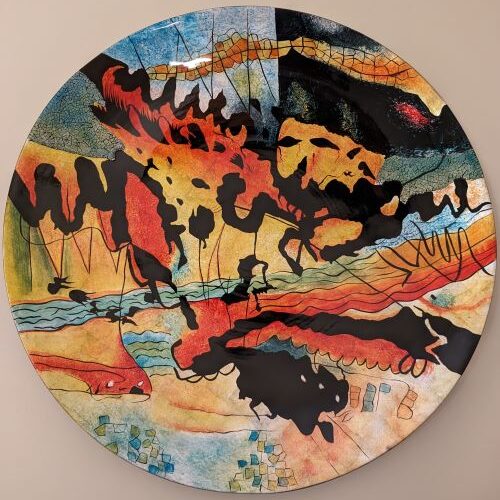
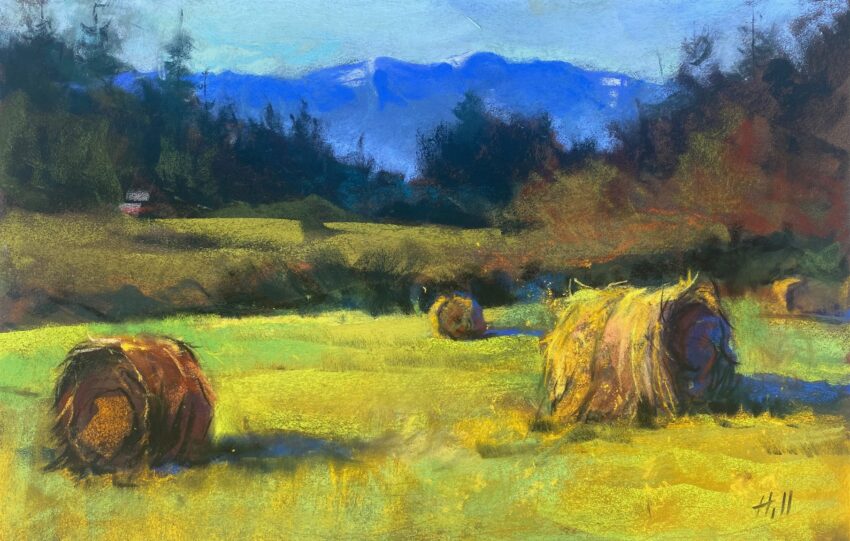
Steve’s work is so captivating and inviting.
I’m pleased to state that he is a friend and fellow artist.